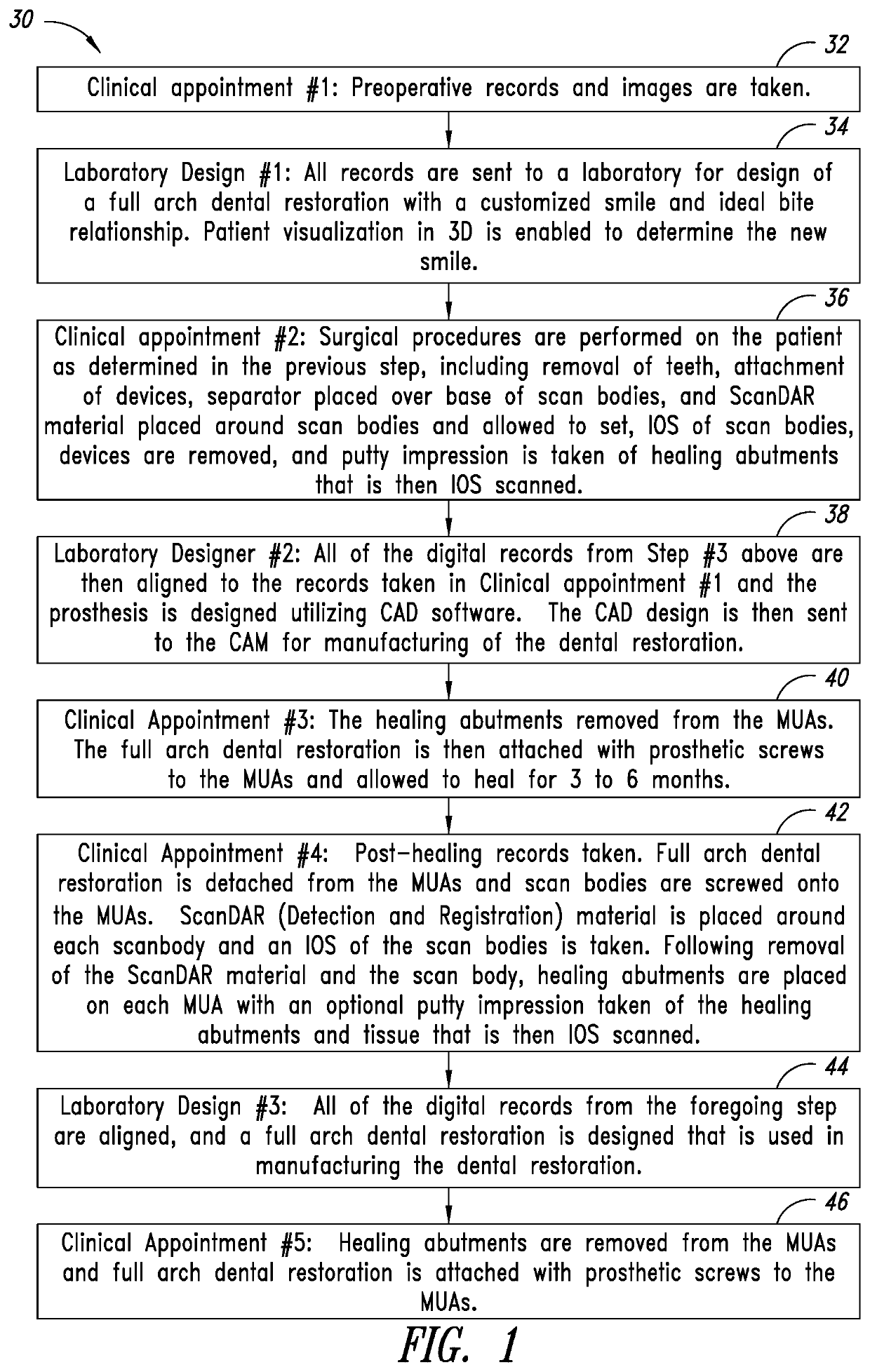System and method of digital workflow for surgical and restorative dentistry
a digital workflow and surgical technology, applied in the field of surgical and restorative dentistry, can solve the problems of affecting the diagnosis and treatment plan requiring a significant amount of time and multiple appointments, and restoring the dentition of patients with edentulous teeth traditionally is laborious and difficult, and achieves the effects of reducing the number of patients, and reducing the cost of treatmen
- Summary
- Abstract
- Description
- Claims
- Application Information
AI Technical Summary
Benefits of technology
Problems solved by technology
Method used
Image
Examples
Embodiment Construction
[0054]In the following description, certain specific details are set forth in order to provide a thorough understanding of various disclosed implementations. However, one skilled in the relevant art will recognize that implementations may be practiced without one or more of these specific details, or with other methods, components, materials, etc. In other instances, well-known structures associated with scanners, scan bodies, dental tools and devices have not been shown or described in detail to avoid unnecessarily obscuring descriptions of the implementations.
[0055]Unless the context requires otherwise, throughout the specification and claims which follow, the word “comprise” and variations thereof, such as, “comprises” and “comprising” are to be construed in an open, inclusive sense, that is as “including, but not limited to.”
[0056]Reference throughout this specification to “one implementation” or “an implementation” means that a particular feature, structure or characteristic de...
PUM
 Login to View More
Login to View More Abstract
Description
Claims
Application Information
 Login to View More
Login to View More - R&D
- Intellectual Property
- Life Sciences
- Materials
- Tech Scout
- Unparalleled Data Quality
- Higher Quality Content
- 60% Fewer Hallucinations
Browse by: Latest US Patents, China's latest patents, Technical Efficacy Thesaurus, Application Domain, Technology Topic, Popular Technical Reports.
© 2025 PatSnap. All rights reserved.Legal|Privacy policy|Modern Slavery Act Transparency Statement|Sitemap|About US| Contact US: help@patsnap.com



